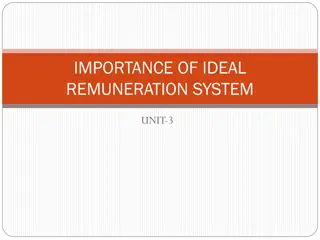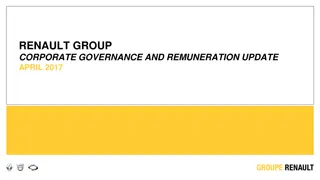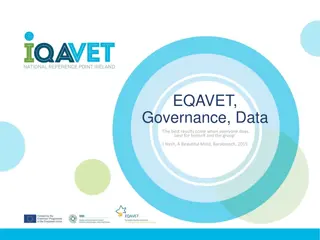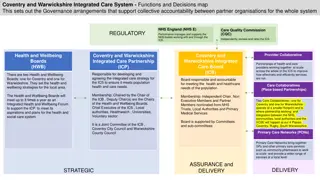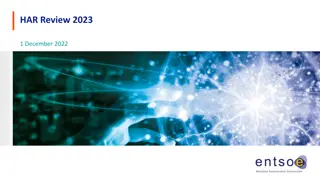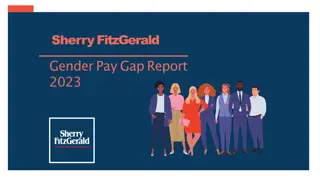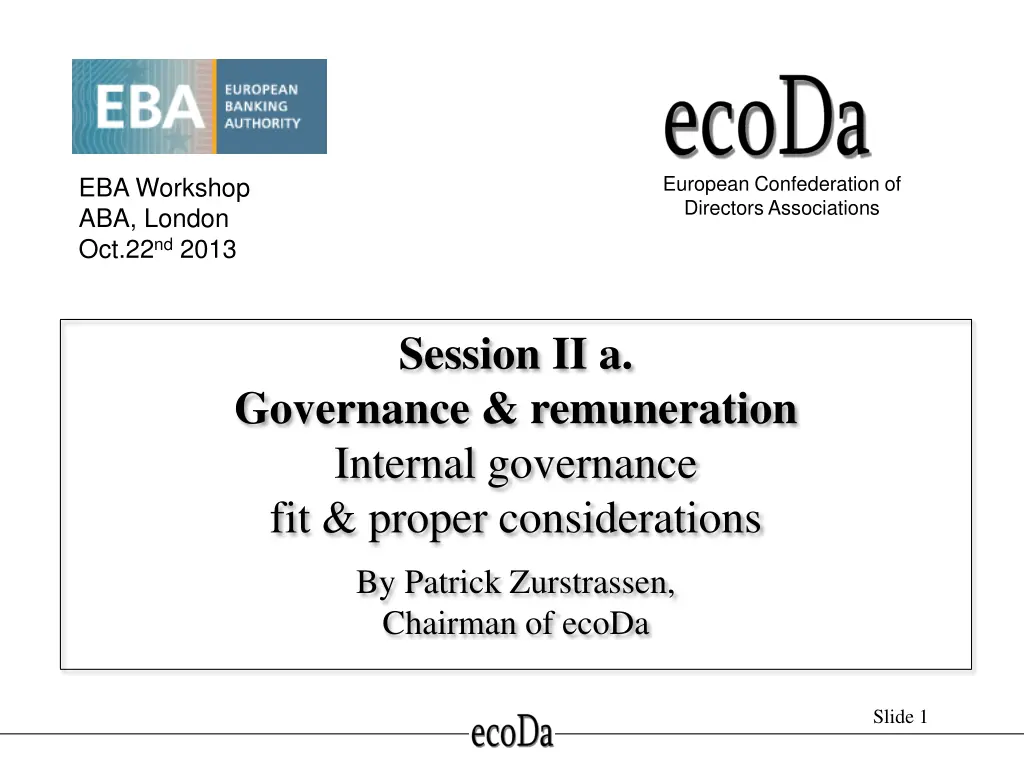
Key Governance Considerations by European Confederation of Directors Associations
Explore insights on governance and remuneration in the corporate world, as highlighted by the European Confederation of Directors Associations (ecoDa). Learn about the mission of ecoDa, governance issues addressed by CRD IV, and the importance of time availability for directors in banks.
Download Presentation

Please find below an Image/Link to download the presentation.
The content on the website is provided AS IS for your information and personal use only. It may not be sold, licensed, or shared on other websites without obtaining consent from the author. If you encounter any issues during the download, it is possible that the publisher has removed the file from their server.
You are allowed to download the files provided on this website for personal or commercial use, subject to the condition that they are used lawfully. All files are the property of their respective owners.
The content on the website is provided AS IS for your information and personal use only. It may not be sold, licensed, or shared on other websites without obtaining consent from the author.
E N D
Presentation Transcript
European Confederation of Directors Associations EBA Workshop ABA, London Oct.22nd2013 Session II a. Governance & remuneration Internal governance fit & proper considerations By Patrick Zurstrassen, Chairman of ecoDa Slide 1
ecoDa The European Confederation of Directors' Associations (ecoDa) is a not- for-profit association founded in 2004 under the laws of Belgium. Its objective is to represent the views of company directors from EU member states to corporate governance policy-makers at EU level. ecoDa is based in Brussels, in the European are, at 42, Rue de la Loi. ecoDa s member organisations represent board directors from the largest public companies to the smallest private firms, both listed and unlisted, from privately owned companies to state owned entreprises. Slide 2
Brushing a general view on the proportionality judgment in banks. Balance sheet, RWA, staff, clients, capital, P&L, etc Size Internal organization One tier / Two tiers Commercial / mutual Internal governance Regulatory difference & convergence Ownership Complexity & scope Private / Public Commercial / mutual State-owned: full or partial Joint venture Head bank or subsidiary [if so: major subs or minor subs.] Systemic vs regular Number & complexity of business lines Number & activities of subsidiaries Local / regional / international presence Use of delegations Slide 3
Governance issues adressed by CRD IV Responsibility of the board Creation, missions & means of board committees, ie Nomination & Remuneration Committees Composition of the board, including diversity of the board Qualities of the board and board members. Individual independence of mind Time availability of directors Individual and collective knowledge, skills & experience Honesty & integrity Due processes of board Selection of board members and of executives Improvement of competence and knowledge: induction & education. Collective and individual assessments. Slide 4
Focusing on some governance issues 5
Time availability of banks directors Scope Principle based Rules based Art.90.2. in CRD IV: All directors shall commit sufficient time to perform their functions in the institutions Art. 90.3. in CRD IV. Hard limitation for significant institutions [3 or 4] General scope regulation Submission of declaration of the number and nature of mandates. Time estimation. Periodic declaration Enforcement Same plus soft or hard limits on number of mandates. Interview. Testing. Periodic declaration Enforcement Banking supervisor Code of governance Guidelines on time availability and reporting Code of governance w.hard rules Guidelines on time availability and reporting with hard rules Professional [Directors] associations Corporate banking group Internal code of governance Corporate nomination chain Internal code of governance Slide 6
The Nomination Chain Shareholders CEO Own Sourcing Chief HR Officer Nomination Committee Board of Directors General Assembly Executive Search Nomination Committee Chairman Bank Supervisor The nomination process Analysis Diligence Interviews Testing Slide 7
Time availability periodic assessment Nature: Usually self-assesment as periodic report of activities. Recipients: Most of time: one self, D&O insurer, HR & chairman of NC. But also: members of NC, board chairman, members of board or general assembly. For listed bank in certain countries: public through bank internet site. Frequency: Usually annual, with exception for D&O, quarterly. Contents of the periodic report of activities: List of mandates /companies, descrition of companies, seat, economic indicators, chairperson, number of meetings, committees, time spent, continuing education, etc Slide 8
Difficulties in hard limits on directorships Not all banks are requiring the same available time. The proportionality concept remains complex to define and delicate to apply. Not all bank directors are busy corporate CEO running large corporations. A growing number are persons devoting themselves exclusively to NED duties, thus enjoying more available time for board duties. Not all persons have the same working capacities, in terms of experience, skills, resources, as well as of analytical and administrative supports. The nomination chain, processes and approvals are integrating time availability as a key nomination criteria. Hard limits may deresponsabilize the participants to such process, including the shareholders and the local supervisors. Unresearched effects of hard limits on supply and demand for directors. Slide 9
Collective knowledge: the competence matrix Practice/discipline 1. Bank management 2. Credit Management 3. Asset Management 4. Investment banking Names X X X X X X X X 5. CRM/Sales management X 6. Operations Management X 7. HR Management X 8. Clients & communications X 9. Finance & treasury X X 10. Risk management X X 11. Compliance X 12. Accounting X 13. Internal Audit X X 14. Legal & regulatory X Slide 10
Independence Individual: Unobstructed exercise of free judgment stemming from absence of conflict of interest Collective: See Art. 88.2: The decision making is not dominated by any one or small group of individual in a manner that is detrimental to the interest of the institution as a whole . One-tier system Number of independant directors NoneOneTwo Majority Super-majority Slide 11 Two-tier system
Induction Normal contents: Introduction to the company Documentation on the company Individual presentation to the members of the management of the company Individual presentation to main [share]owners Objective: Rapidly Ready-to-serve new director Process: From light [one day session] to onsite visits [including main operations and foreign activities] Slide 12
Directors continuing education: internal Scope: New products New activities New acquisitions New reports New board tools New regulations New policies New strategy Performed by management with the help: Auditors Legal counsel Investment banker Etc Slide 13
Directors continuing education: external Sectorial General Banks Listed Cies General governance Strategic planning Management Risk management Audit Committee Nomination Committee Evaluation Committee Ethics & governance Personal liabilities mgt Etc Functional Slide 14
To contact us: ecoDa rue de la Loi, 42 , 1040 Brussels, Belgium Chairman: Patrick Zurstrassen General Secretary: B atrice Richez-Baum Phone : 0032 2 231 58 11 Fax : 0032 2 231 58 31 Email : beatrice.richez-baum@ecoda.org Website : www.ecoda.org Slide 15







